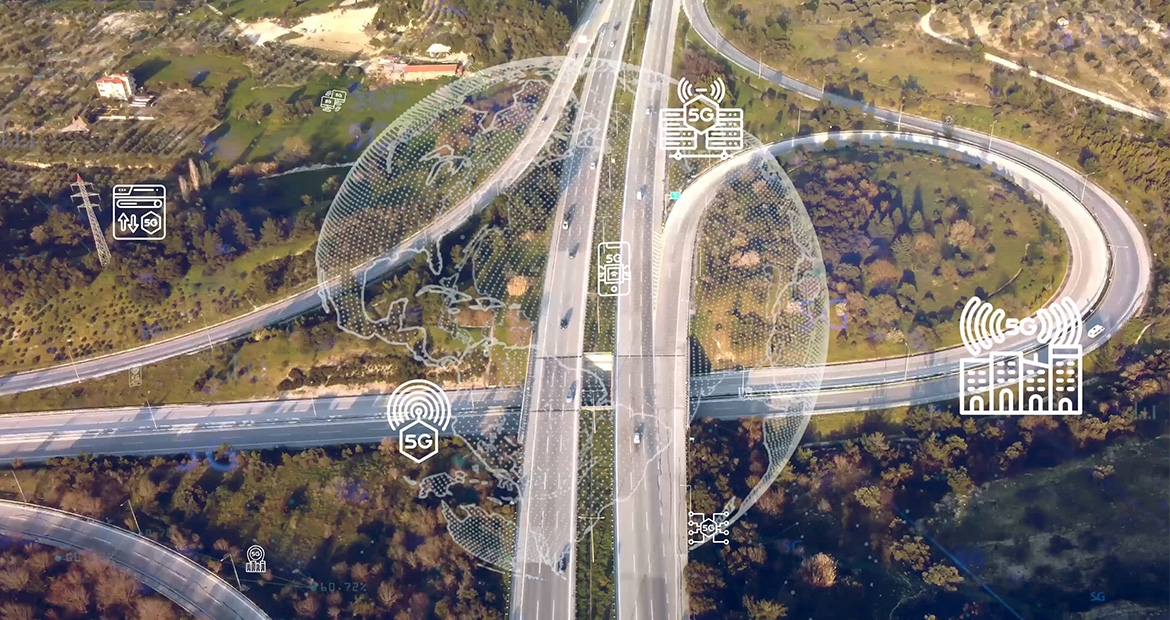What are the benefits of vehicle software to OEMs in the energy transition?
By Cummins Components Business Unit

As the automotive industry navigates the complexities of the energy transition, vehicle software is emerging as a key component in transforming how OEMs operate and innovate. The sophistication of vehicle software components can bring new capabilities and create a higher level of efficiency and safety. This article looks at the different facets of vehicle software’s role in the energy transition and how original engine manufacturers (OEMs) can partner with Cummins to take advantage of these innovative technologies.
What are the software components in a vehicle’s control system?
Two key layers of software run a vehicle’s control system:
- Base Software: Base software serves as the vehicle's nervous system. This software is key for internal communications. It connects the control modules to the vehicle's communication network, facilitating the exchange of data between sensors, actuators and other control units. Runtime software underpins the execution of applications and base software instructions. It is tailored to the vehicle’s specific microprocessors and ensures that software runs effectively on the hardware.
- Application Software: This is the high-level vehicle software that acts as the control system’s brain. It makes critical decisions for the vehicle’s operation, such as fueling and emissions control.

How has software development benefitted commercial vehicles?
- Transition from inefficient to sophisticated systems: The introduction of vehicle software in commercial vehicles has helped the transition from inefficient mechanical systems to sophisticated, responsive and software-driven machinery. Take, for example, the transformation in engine management systems where fuel and air intake were once mechanically controlled, often leading to suboptimal combustion cycles. Now software-driven engine control modules (ECMs) dynamically adjust these parameters. This precise control maximizes efficiency by adjusting the fuel injection timing based on real-time feedback, leading to significant fuel savings and emission reductions.
- Increased safety with software: Safety features enabled by software advancements have profoundly changed how commercial vehicles drive. Advanced Driver-Assistance Systems (ADAS) use software to interpret sensor data to provide lane departure warnings and adaptive cruise control. These systems prevent accidents by keeping the vehicle in its lane and maintaining a safe following distance, reducing the likelihood of collisions due to driver error or inattention
- Efficient vehicle maintenance: The introduction of vehicle software has also revolutionized vehicle maintenance. Cummins’ digital products use software to continuously monitor engine performance and to identify issues such as irregular combustion or component wear before they lead to breakdowns. This predictive maintenance approach can avoid expensive repairs and keep vehicles on the road longer. Thus, increasing uptime and extending the operational lifespan of vehicles.
Vehicle software considerations for engine manufacturers
Some engine manufacturers are now using a streamlined approach for their vehicles' electronics. They are setting up a main controller that handles all the major tasks and smaller, local controllers that talk to the sensors and parts close to them. This setup lets manufacturers use the same software across different types of vehicles, which makes things simpler and less expensive to make. They're also looking for software that meets AutoSAR standards, which means it's built on widely accepted industry rules and can be easily updated by those who understand these standards. Plus, they're making sure all their products can meet the European Union’s strict “Euro 7” emission rules, ensuring every part of the vehicle can keep up with increasingly strict regulatory standards.
Looking to the future, vehicle software will not only enable a new suite of vehicle features and capabilities but will also enhance the integration of vehicle systems. Bringing these new capabilities together will boost vehicle performance and efficiency. This will help reduce fuel consumption and greenhouse gas emissions, allowing for more sustainable operations. For instance, software optimizations in fuel table adjustments during route planning or in vehicle-to-vehicle interactions like platooning will help achieve sustainability goals. This means lower maintenance costs, reduced downtime, improved fuel efficiency and more effective fleet management.

The path to adopting advanced vehicle software has some challenges like platform standardization for faster data sharing within and outside the vehicle, including cloud connectivity. As software continues to add to an ever-growing list of features, its complexity grows, which can make development, testing and validation increasingly challenging. Vehicle software safety and reliability are non-negotiable, given the potentially dire consequences of failures. Combating cyber risks and implementing adequate cybersecurity also presents challenges. Moreover, the high cost of vehicle software development requires innovative approaches to keep development costs low without compromising on quality or safety.
Cummins’ role in software development
Cummins is at the forefront of developing vehicle software solutions for the energy transition. To provide the market with the best engine solution, Cummins implements the best-in-class technology. We are spearheading the development of engine technologies that are compatible with diverse fuel types and adaptable to varying emission standards. Our commitment to innovation is demonstrated through flexible electronics, advanced sensor arrays and actuators designed to meet and exceed the stringent requirements of both current and future landscapes. Cummins’ forward-leaning approach ensures that manufacturers have access to our engines and parts to help lead the energy transition journey. Contact us or your local Cummins sales office today to learn more and partner with us to leverage cutting-edge vehicle software solutions.
Author Profiles
Related Topics
Related Tags